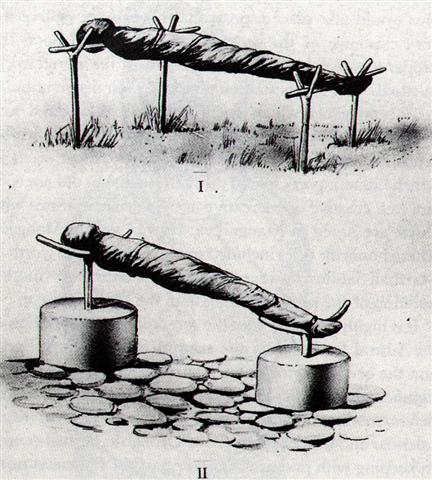|
Toga
1. Winter season. Two seasons used to
be distinguished in ancient times: hora,
summer, and toga, winter. 2. To lean against
somehing; to hold something fast; support, post
supporting the roof. 3. To throw something with a
sudden movement. 4. To feed oneself, to eat enough;
e-toga koe ana oho ki te aga, eat well first
when you go to work.
1. Winter. P Pau., Mgv.: toga,
south. Mq.: tuatoka, east wind. Ta.: toa,
south. 2. Column, prop; togatoga, prop, stay.
Togariki, northeast wind.
Wooden platform for a dead chief:
ka tuu i te toga (Bb8-42), when the wooden
platform has been erected.
The expressions Tonga,
Kona, Toa (Sam., Haw., Tah.), to indicate
the quarter of an island or of the wind, between the
south and west, and Tokelau, Toerau,
Koolau (Sam., Haw., Tah.), to indicate the
opposite directions from north to east - expressions
universal throughout Polynesia, and but little
modified by subsequent local circumstances - point
strongly to a former habitat in lands where the
regular monsoons prevailed. Etymologically 'Tonga',
'Kona', contracted from 'To-anga' or 'Ko-ana',
signifies 'the setting', seil. of the sun. 'Toke-lau',
of which the other forms are merely dialectical
variations, signifies 'the cold, chilly sea'. |




